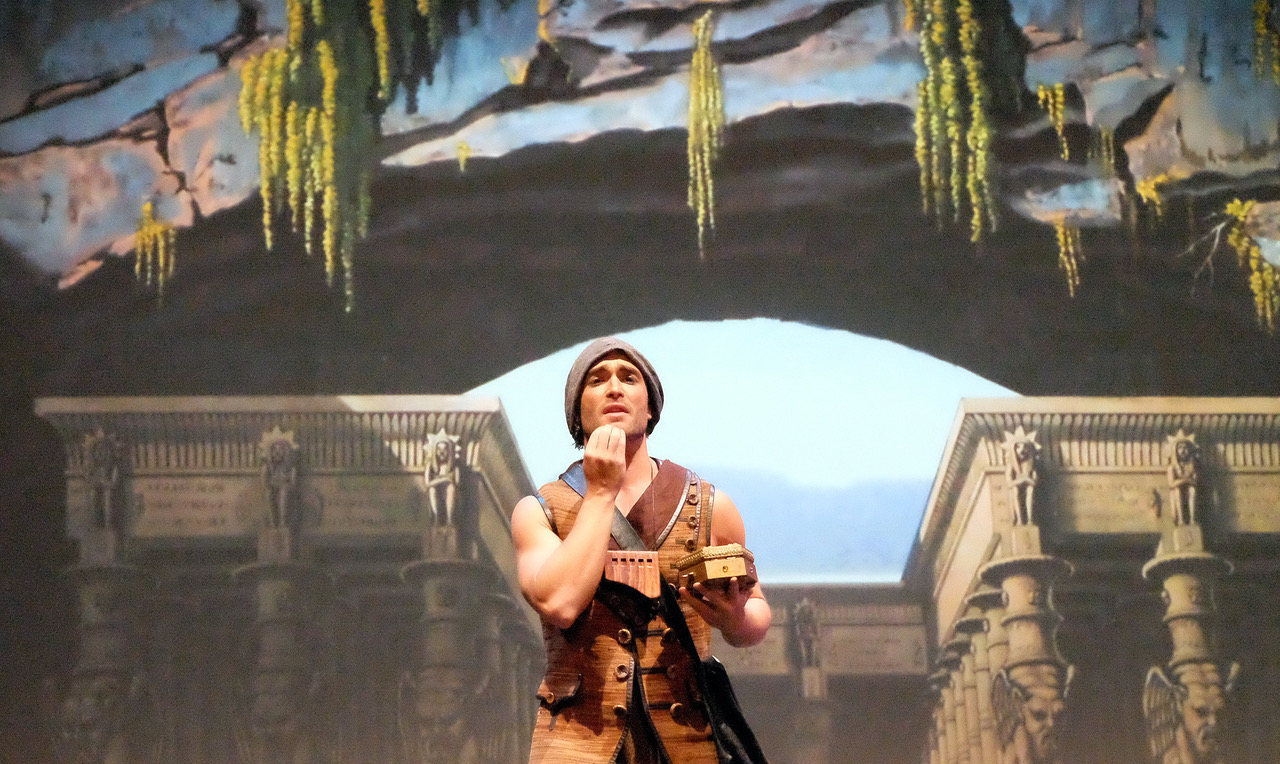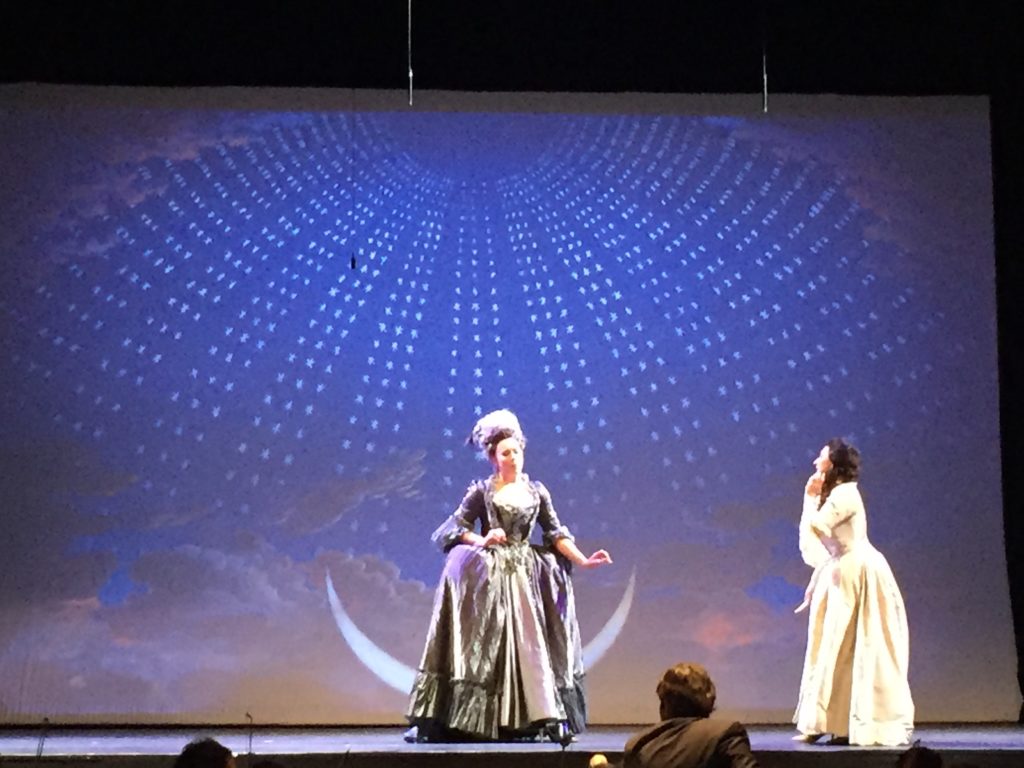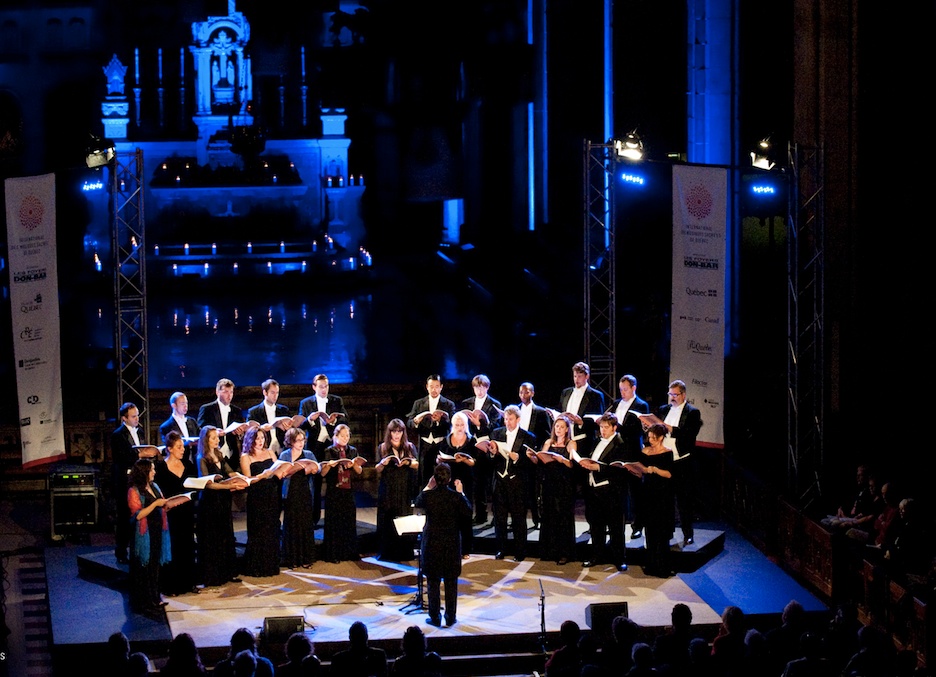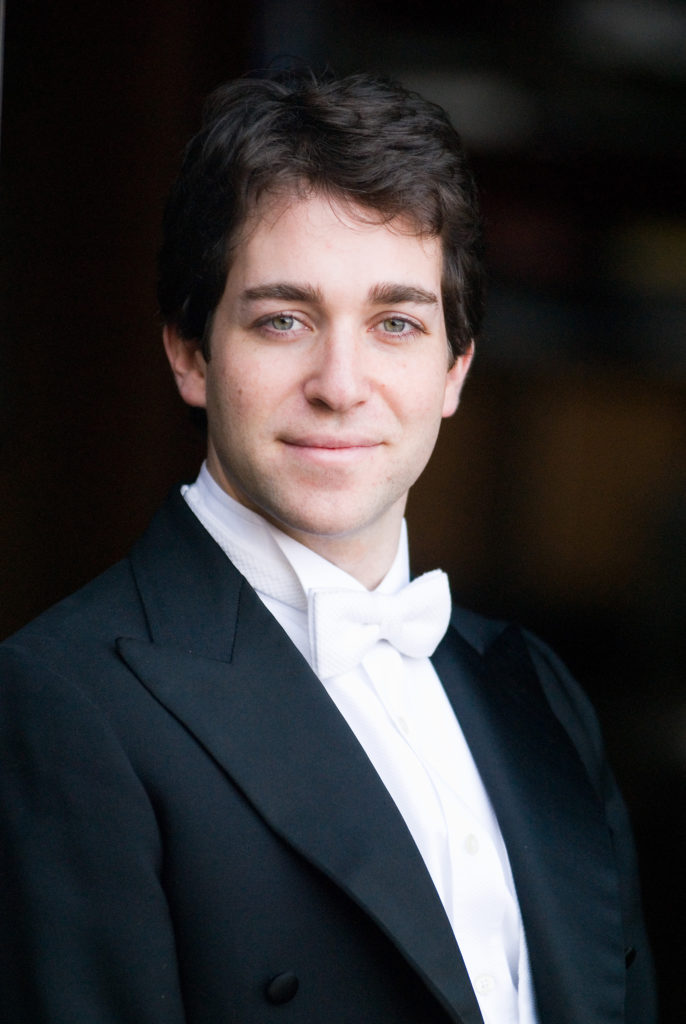Clarion presents The Magic Flute
The Clarion Orchestra, The Clarion Choir
Steven Fox, conductor and artistic director
Alain Gauthier, stage director
El Museo del Barrio, New York, NY
March 11, 2017
On a frigid Saturday night, Clarion presented Mozart’s The Magic Flute, or to be more proper, Die Zauberflöte, as it was to be sung in German here. Those intrepid souls who braved the cold were treated to a journey back in time, in what was a most delightful evening of music. Proceeds from the concert were to benefit the youth programs of Christodora, and the performance was given in memory of Beatrice Goelet Manice.
Everything in the making of this production was with the idea of creating a nearly authentic period feel. The theatre at El Museo del Barrio has the look and feel of an intimate 18th/19th century venue, the Clarion Orchestra uses period instruments, and the sets were inspired by those designed by Karl Friedrich Schinkel for the 1816 Berlin performances. In a nod to modern needs, the sets were projected in a screen, and supertitles in English were projected above the stage. This is an approach of which this reviewer highly approves, which makes the music front and center, and not some avant-garde setting that some modern directors seem to feel is necessary (Hint: They are not).
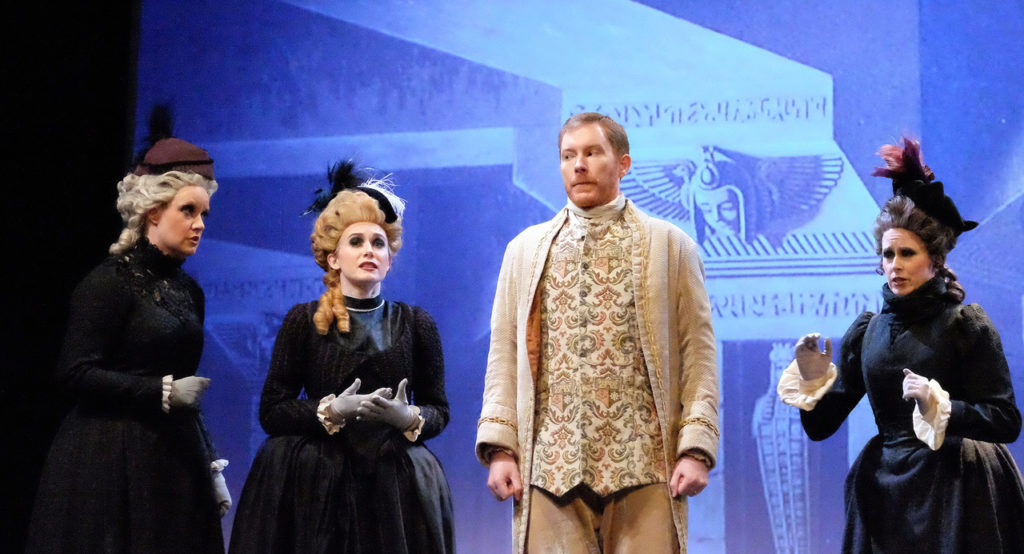
Three-Ladies-Sarah-Brailey-Nola-Richardson-Kate-Maroney-and-Tamino-Robin-Tritschler-Clarion-Die-Zauberflöte-photo-Hope-Lourie-Killcoyne.jpeg
The story of The Magic Flute is so well known that it is not necessary to go into any detail here. Those readers who wish to learn more can follow this link: The Magic Flute. It is of interest to note the many Masonic influences that appear throughout the opera- e.g. Three flats in the opening key, three chords that stand alone to begin, the three ladies in The Queen of the Night’s entourage, the three spirit guides, etc. The number three has special significance in Freemasonry, representing the Trinity. Mozart joined the Freemasons on December 17, 1784.
While I am usually not a fan of period instruments, the Clarion Orchestra almost made me a believer in what was a first-rate performance by a first-rate ensemble. Conductor Steven Fox led with confidence, and with skillful attention and sensitivity in blending the vocalists and the orchestra with near perfection.
With apologies to the large cast, who were all excellent, it is impossible to acknowledge each member individually, so I will limit myself to the main characters. Robin Tritschler has a lyrical tenor voice that is well suited to the idealistic Tamino. The fey Elena Xanthoudakis won hearts as the innocent Pamina. Craig Philips, who played Sarastro, projected a regal bearing worthy of a High Priest, and his strong bass voice filled the hall, even into the subterranean range (those low F’s!).
The stars of the night were John Brancy, who played Papageno, and Anna Dennis, who played The Queen of the Night. Mr. Brancy’s Papageno was not played as a buffoon, but rather as a “blowhard”- one who talks big, but never lives up to that big talk. It was an effective approach that paid off in spades, in what was a winning performance that delighted the audience. Ms. Dennis handled one of opera’s most demanding roles with what seemed ridiculous ease, which of course is a testament to her great ability. Her singing of the two famous arias, O zittre nicht and Der Hölle Rache, both ascending into the stratosphere (those high F’s!) brought shouts of “Brava!” from the audience- they knew that had heard something special!
There were a few anachronisms- a hilarious “kick line” dance led by Monostatos (Mark Bleeke), and a “talk to the hand” gesture to Papageno by one of the three young “spirit” boys, which almost stole the show. The audience roared in laughter at both. It was also nice to see so many young people in the audience, and even better to see them enjoying the show. One must also give kudos to stage director Alain Gauthier for his fine work.
When it ended, the audience responded with an extended standing ovation, with each member of the cast taking turns accepting special recognition. Congratulations to all the performers and the countless numbers of those “behind-the-scenes” people who made this Magic Flute a stunning success.

